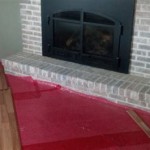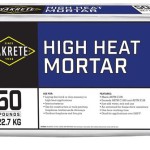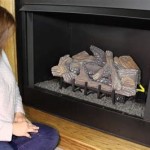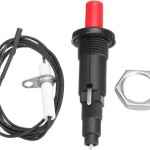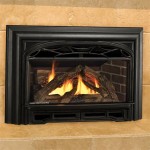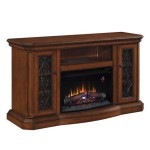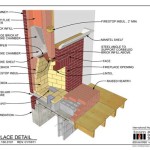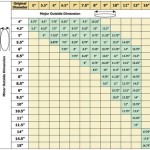Gas Fireplace Thermocouple and Thermopile: Essential Components for Safe and Efficient Operation
Gas fireplaces provide a convenient and aesthetically pleasing heating solution for many homes. Central to their safe and reliable operation are two crucial components: the thermocouple and the thermopile. These devices are responsible for generating the electrical current necessary to keep the gas valve open, allowing the fireplace to function continuously. Understanding the roles and functions of these components is essential for homeowners and technicians alike to troubleshoot issues and ensure the fireplace operates effectively.
The thermocouple and thermopile operate on the principle of the Seebeck effect, a thermoelectric phenomenon where a temperature difference between two dissimilar electrical conductors or semiconductors creates a voltage difference between them. This voltage difference, though small, is sufficient to power the gas valve in the fireplace's pilot assembly.
Thermocouple: A Single-Junction Thermoelectric Generator
The thermocouple is the simpler of the two devices. It consists of two dissimilar metal wires, typically made of materials like iron, constantan, or chromel, joined at one end, forming a "hot junction." This junction is positioned directly in the pilot flame of the gas fireplace. The other ends of the wires are connected to the gas valve. When the pilot flame heats the hot junction, a small voltage, typically in the range of 20-30 millivolts, is generated.
This voltage powers a small electromagnet within the gas valve. As long as the pilot flame is present and the thermocouple is generating sufficient voltage, the electromagnet holds the valve open, allowing gas to flow to the main burner. If the pilot flame extinguishes, the hot junction cools, the voltage drops, and the electromagnet releases, causing the gas valve to close and shutting off the gas supply. This safety feature prevents the accumulation of unburned gas in the event of a pilot light failure. This is a crucial safety feature.
The thermocouple is designed for quick response. Its small size allows it to heat up and cool down rapidly, ensuring prompt shut-off of the gas supply when the pilot flame is lost. However, its single-junction design also means it produces a relatively low voltage, making it suitable primarily for pilot light operation.
Thermopile: Enhanced Voltage Output for Greater Functionality
A thermopile, on the other hand, is an assembly of multiple thermocouples connected in series. This configuration allows the thermopile to generate a significantly higher voltage, typically ranging from 250 to 750 millivolts, depending on the number of thermocouples and the temperature difference. Like the thermocouple, the hot junctions of the thermopile are positioned in or near the pilot flame or, in some cases, directly above the main burner's flame, while the cold junctions are kept at a lower temperature.
The increased voltage output of the thermopile enables it to power more complex gas valve systems, including those that control the main burner and operate electronic ignition systems. In some gas fireplaces, the thermopile provides the power to operate an electronic ignition module, which generates a spark to ignite the pilot light or main burner. The higher voltage also allows for the use of more sophisticated gas valve mechanisms, such as modulating valves that can adjust the flame height and heat output.
Because of its higher output, the thermopile can also be used to power some simple remote control systems. This means that homeowners can turn the fireplace on and off without needing to directly access the control valve. The thermopile’s robust design and ability to handle higher voltage requirements make it a vital component in many modern gas fireplaces.
Troubleshooting and Maintenance
When a gas fireplace fails to light or stay lit, the thermocouple or thermopile is often the culprit. A common symptom of a faulty thermocouple is a pilot light that goes out as soon as the control knob is released. This indicates that the thermocouple is not generating sufficient voltage to hold the gas valve open. Similarly, a malfunctioning thermopile can prevent the main burner from igniting or cause the fireplace to shut down unexpectedly.
Several factors can contribute to thermocouple and thermopile failure. Soot and debris accumulation around the hot junction can insulate it from the flame, reducing its efficiency. Corrosion on the electrical connections can also impede the flow of current. Over time, the metal wires within the thermocouple or thermopile can degrade due to repeated heating and cooling cycles, leading to a decrease in voltage output.
Troubleshooting typically begins with a visual inspection. Check for any signs of soot, corrosion, or physical damage. Clean the thermocouple or thermopile with a fine wire brush or steel wool to remove any deposits. Ensure that all electrical connections are clean and secure. Use a multimeter to measure the voltage output of the thermocouple or thermopile while the pilot flame is lit. If the voltage is below the manufacturer's specified minimum, the component likely needs to be replaced. Consulting the fireplace's service manual for specific voltage requirements is crucial.
Replacing a thermocouple or thermopile is a relatively straightforward procedure, but it is essential to follow the manufacturer's instructions carefully. Ensure that the new component is compatible with the fireplace model. Turn off the gas supply before beginning any repairs. After installing the new thermocouple or thermopile, check for gas leaks using a soap and water solution. Regularly inspecting and maintaining these components can help prolong their lifespan and ensure the safe and reliable operation of the gas fireplace.
Regular maintenance, including cleaning around the pilot light assembly and checking for any signs of corrosion, is essential to prevent issues with the thermocouple or thermopile. A professional inspection by a qualified technician is also recommended annually to ensure all components are functioning correctly and the fireplace is operating safely.

Thermo Thermopiles Friendly Fires

Thermocouple Vs Thermopile In Gas Equipment S

Thermo Thermopiles Friendly Fires

Gas Fireplace Won T Stay Lit Magic Touch Mechanical

Identifying Gas Fireplace Parts Www Mygasfireplacerepair Com

Gas Fireplace Won T Stay Lit Magic Touch Mechanical

Difference Between Thermopile And Thermocouple 2024 Practical Guide Linquip

Thermocouple Vs Thermopile A Complete Comparison Linquip

Gas Fireplace Thermopile Thermogenerator Thermocouple Replacement Part 24 Inches

Diy Gas Fireplace Repair No Flame Problem Remodeling Cost Calculator
Related Posts

